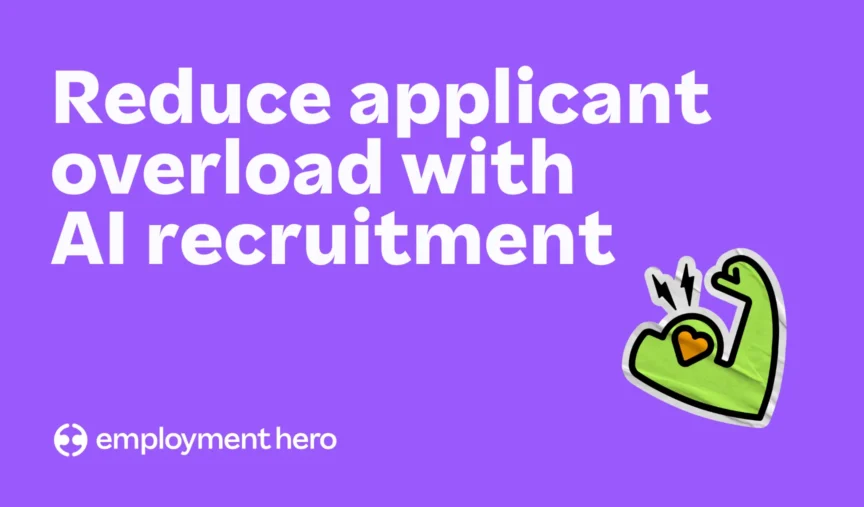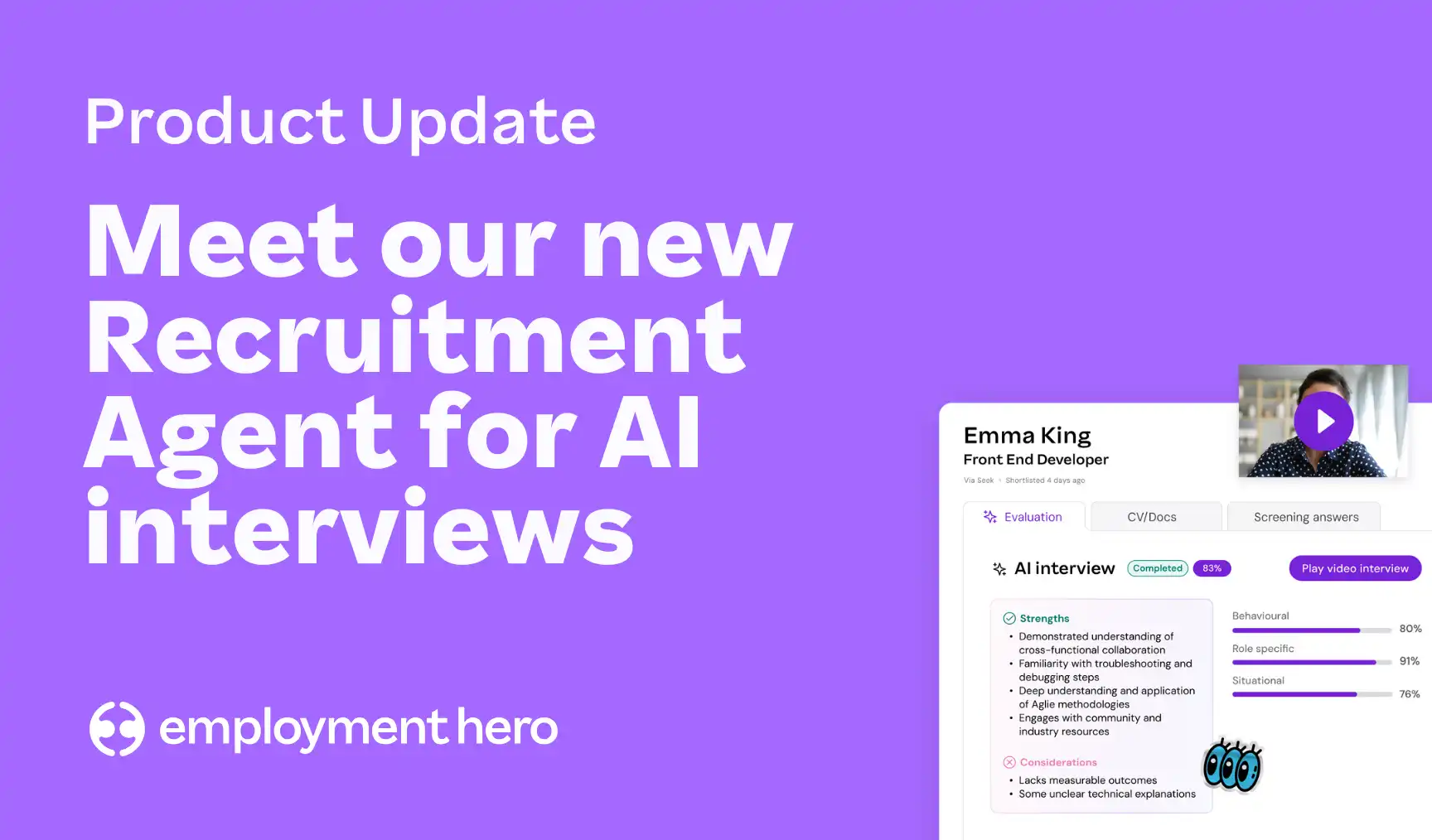HR trends to look out for in 2025
Let’s put our 2024 predictions to the test and take a peek at what lies ahead.

Contents
The last 12 months have been tumultuous for HR, both in the UK and globally. The debate over returning to the office has continued to rage, strikes and industrial action have occasionally brought the whole country to a standstill and the ongoing cost of living crisis has only added to the economic uncertainty.Despite the complexity of the challenges, HR leaders have played a vital role in supporting employees and businesses through these difficult times. From adapting to new ways of working, to providing support for employees’ mental and physical wellbeing, our HR leaders are champions.As we look ahead to 2025, it’s clear that many of the HR trends that emerged in 2024 will continue to shape the world of work. In this post, we’ll catch up with the predictions we made last year, and look ahead to how HR leaders can prepare for 2025.But first, let’s review some of the challenges and roadblocks that our resilient HR leaders have had to face.
What have been the biggest challenges for HR departments in 2024?
So let’s take a closer look at some of the biggest challenges that HR departments are facing.

1. Attracting talent
Over and over again, we’re hearing from employers about how hard it is to attract the right talent. The talent market is currently very competitive, and finding qualified candidates for open positions is becoming increasingly difficult. HR departments need to develop creative strategies to attract top talent. As we’ve seen with the WeWork debacle, companies need to review their company culture and employee experience to stay competitive.
2. Retaining talent
The sister challenge of attracting talent, retaining talent has also been a significant challenge for HR leaders in 2024 due to a confluence of factors, including the lingering effects of the Great Resignation, evolving employee expectations, and a competitive talent landscape. The ongoing talent shortage has made it more difficult for businesses to find and keep top performers, putting immense pressure on HR leaders to develop effective retention strategies.
3. Perfecting hybrid work
When we surveyed employees around the UK, we found that 88% wanted to continue working from home for at least one day a week. It’s a clear signal of the demand for flexibility, yet perfecting hybrid work remains a challenge.Why? Business leaders are looking to strike a balance between the benefits of in-person collaboration and remote flexibility, while also ensuring equitable experiences for all employees, and having clear guidelines and expectations for a distributed workforce. HR leaders are constantly adapting and experimenting with different hybrid models to find the optimal balance that maximises productivity, collaboration, and employee satisfaction.
4. Workplace culture
Cultivating a positive and engaging workplace culture has increasingly been a challenge for HR leaders this year. They’ve had to balance the complexities of managing a hybrid workforce, addressing the diverse needs of a multigenerational workforce, and fostering a sense of belonging and connection in a rapidly changing work environment.
5. Re-engaging the workforce
Employee engagement has been declining in recent years. We regularly hear that re-engaging the workforce is a major issue for HR professionals. This is partly to do with burnout and the rise of remote and hybrid work arrangements.It also marks a culture shift in employee priorities and expectations. HR leaders are grappling with how to revitalise employee motivation, foster a sense of purpose and belonging, and create a work environment that supports both personal and professional fulfilment.
HR trends 2025: How it started vs how it’s going: did we get it right?
In our last trends report, we made eight predictions about the future of HR. It’s time to revisit those forecasts and match them up with what’s occurring today.
Trend 1. Offering financial wellbeing tools
- We said: Businesses will be expected to provide tools and initiatives to enhance the financial wellbeing of employees as large pay rises may not be feasible. Employers might want to consider financial support and guidance, health insurance, additional pension contributions, subsidising childcare and daily expenses, providing financial education resources.
The reality: The trend of businesses offering financial wellbeing tools to their employees has gained significant traction in 2024. Pay packets are increasing at a record rate, yet rising unemployment and a 3% fall in real wages since 2008 mean that there is more pressure on employers to seek alternative ways to support their employees’ financial health.

Businesses are also taking a more holistic approach to financial wellbeing by creating a culture of financial openness and transparency. This involves encouraging employees to talk about their finances, providing resources to help them manage their debt, and offering support for employees who are struggling financially.
Trend 2. Focusing on employee engagement
- We said: Engaging employees effectively to maintain productivity and morale is crucial.
The reality: Employee engagement has been a top priority for many organisations in recent years, and this trend has only intensified as the challenges increased. Engagement is a critical driver of business success – engaged employees are more productive, more creative, and more likely to stay with their employer. Businesses with high employee engagement are 23% more profitable and have 41% lower absenteeism.We don’t see the trend in employee engagement going away anytime soon.
Trend 3. Adopting smart recruitment tools
- We said:Utilising advanced recruitment tools to streamline the hiring process and find the best candidates efficiently will be a hot topic in months to come.
The reality: Smart recruitment tools continue to be a defining HR trend for 2025, with the global recruiting technology market projected to reach $3.5 billion by 2030. This surge in popularity is driven by the need for businesses to streamline their hiring processes, improve efficiency, and gain a competitive edge in the talent market.LinkedIn’s Global Talent Trends 2024 report found that 68% of talent leaders are using AI-powered recruiting tools to enhance their hiring strategies. By automating repetitive tasks, leveraging data analytics, and providing personalised candidate experiences, smart recruitment tools are empowering HR teams to make informed decisions, reduce time to hire, and ultimately attract top talent.AI has certainly inspired us – Employment Hero’s SmartMatch matches employers to great talent instantly, without the need for time-consuming, expensive job boards.
Trend 4. Reducing the duration of the recruitment process
- We said: There will be a push towards making the recruitment process quicker to avoid losing potential talent to competitors.
The reality: Streamlining the recruitment process remains a critical HR trend in 2025, driven by the need to attract and retain top talent in a competitive market. Research shows that over a quarter of employers have been ghosted by candidates during the recruitment process due to lengthy timelines, while a study by Greenhouse found that the length of the initial application is a factor for 66% of candidates in determining whether they’ll complete and submit it.To address these concerns, businesses are adopting strategies such as implementing applicant tracking systems, using talent marketplaces and AI tools to match candidates. By shortening the time to hire, companies can enhance their employer brand, improve candidate experience, and ultimately secure the best talent for their open positions.
Trend 5. Seeking ‘cultural contribution’
- We said: Companies are looking beyond cultural fit to how potential and current employees can contribute to and enhance the company culture.
The reality: Indeed, businesses continue to seek individuals who can make a meaningful contribution to their organisational culture in 2025. This emphasis on cultural fit stems from the recognition that a strong and positive company culture can lead to increased employee engagement, productivity, and innovation. Glassdoor reports that organisations that prioritise cultural fit during the hiring process experience a 20% lower turnover rate.

Trend 6. Implementing corporate sustainability
- We said: With growing concerns about climate change, businesses are expected to adopt sustainable practices and contribute positively to environmental efforts.
The reality: Again, this is a megatrend that is continuing into 2025. As we navigate the climate crisis, it’s imperative for businesses to embrace sustainability, and this is increasingly evident in HR. Adopting sustainable HR policies not only contributes to environmental protection but also boosts employer brand, employee engagement and motivation. This trend encompasses aspects like eco-friendly office spaces and employee wellness initiatives, showing that sustainability and HR are closely linked.Three drivers are contributing to this trend: increased employee demand for sustainability; having a differentiator in attracting and retaining top talent; and the growing importance of ESG factors (environmental, social, and governance).
Trend 7. Offering ongoing flexibility
- We said:Flexible working arrangements, including remote work options, are predicted to continue as they can ease financial burdens for employees.
The reality: Flexibility is here to stay. The CIPD report on flexible and hybrid working practices in 2023 reveals a growing trend in flexible working arrangements, with 60% of employees currently having such arrangements, up from 51% the previous year. Employers are increasingly recognising the importance of offering flexible working options to attract talent, with 66% believing it’s important for job advertisements.

However, there’s still unmet demand for various types of flexible working, with many employees desiring options like a four-day week and informal flexibility. The report also highlights the rise in hybrid working, with 83% of organisations implementing it in some form. This shift has generally been positive for organisational productivity and employee satisfaction, but challenges remain in areas like employee connection to organisational purpose and effective team leadership.
Trend 8. Open source change strategy
- We said:Businesses will adopt a more open and adaptable approach to change.
The reality: Open-source change strategy is an emerging HR trend in 2025, driven by the need for businesses to adopt a more transparent, collaborative, and inclusive approach to change management. This trend is evident in several key factors: 1) the increasing complexity of change; 2) the demand for employee engagement and participatory decision-making, and 3) more than ever, the need for agility, innovation and a culture of continuous learning.Gartner’s research revealed that 82% of workers say it’s important for their organisation to see them as a person, not just an employee, and so an open-source approach provides employees with a more human deal by actively engaging them in change initiatives. By approaching change like this, employers can not only reduce change fatigue but also increase the likelihood of successful change initiatives.
Having looked at how our predicted 2024 trends have come to fruition, and are continuing into 2025, let’s look at what else HR leaders can expect and where they should focus their efforts in the year ahead.
HR trends 2025: What should professionals focus on?
As we move into 2025, the HR landscape is expected to undergo significant transformations, driven by evolving employee expectations and technological advancements. Here are some of the top trends that are likely to shape the HR function in the coming year:
1. Leadership development
It’s time to revamp the role of managers. They’re overwhelmed, juggling more than they can handle. So, reset expectations, rebuild your manager pipeline, and streamline processes for more effective management.Elevate your leaders to new heights by focusing on their growth and capabilities. In doing so, you’ll enable them to tackle complex challenges, inspire their teams, and propel your business forward in a world that’s constantly evolving.Embrace a human-centric approach that prioritises employee well-being, fosters an inclusive culture, and encourages continuous growth. In today’s fast-paced, tech-driven workplaces, upskilling and reskilling are critical for preparing your workforce for what’s next. Adopt a comprehensive strategy that not only hones the skills of your leaders but also supports their overall well-being. This creates a resilient, dynamic leadership environment, ready to take on the future.
2. Workplace microcultures
Hybrid work models offer employees flexibility to choose their work location, enhancing work-life balance and potentially reducing commuting stress. But more than ever, it’s crucial to intentionally align and connect employees to your company’s culture. Focus on creating vibrant microcultures within teams to maintain a strong, cohesive company culture.

Microcultures in the workplace are emerging as a significant HR trend for 2025 due to their ability to strengthen interpersonal bonds and contribute to a positive company culture. These microcultures, formed around common identities, challenges, or interests, not only enhance employees’ connection to the organisation but also drive business value by fostering a sense of belonging and increasing retention.Embracing and nurturing these microcultures, especially in hybrid or remote work environments, can lead to increased productivity and engagement, making them a key focus for HR leaders looking to build a more connected and effective workforce.
Just starting your career in HR and looking to learn more about how you can make an impact? Download our free Intro to HR guide now.
3. Data-driven decision-making
HR departments are collecting more data than ever before, and they need the tools to analyse this data and gain insights that can inform their decision-making. This is where people analytics comes into play, and it will only become a bigger trend in 2025.By strategically applying data to understand and enhance workforce dynamics, businesses can make informed decisions across various HR functions. This includes refining talent acquisition, optimising employee engagement, ensuring pay equity, and enhancing performance management.As AI technology becomes more integrated into HR processes, it’s crucial to establish a robust framework that addresses governance, workforce readiness, and ethical considerations. This approach to people analytics will lead to a more strategic and impactful management of human capital, aligning data-driven insights with business objectives for a smarter, more efficient workforce strategy.
4. Hyper-personalised Employee Experience
This emerging trend for 2025 will see organisations creating a more tailored, responsive and engaging workplace experience for each and every employee. This trend will change how employers engage their workforce and it will help organisations create more relevant training programs, development programs and wellness initiatives. In the year ahead, we will see a significant shift in how organisations engage with their employees with many going above and beyond to prioritise individual needs. This trend will of course boost employee satisfaction but also see productivity and engagement skyrocket.
5. Smart recruitment
Smart recruitment, driven by advancements in technology and workforce analytics, is poised to transform hiring practices in 2025. Smart recruitment empowers HR professionals to make informed decisions, streamline the recruitment process, and attract top talent, fostering a more efficient and effective workforce, all while cutting down the time to hire.Employment Hero’s HR platform includes incredible tools such as SmartMatch and our Applicant Tracking System which can help you recruit quickly and efficiently. This software can assist with the entire recruiting process, from screening potential candidates, scheduling interviews and checking references, to making that big job offer.
HR trends 2025: How Employment Hero can help
Employment Hero is the world’s first employment OS. As the world of work continues to evolve, staying ahead of the curve will give you a competitive edge. By embracing these HR trends for 2025, you’ll create a more agile, engaged, and empowered workforce that will drive your business success in the years to come.Ready for the future of work, today? Employment Hero’s HR software offers you an easy way to get the most out of your workforce. If you’re interested in how the platform could work for you, reach out and talk to a member of our team.
Related Resources
-
 Read more: Virtual Reality in Corporate Training: Use Cases to Revolutionise Your Workplace
Read more: Virtual Reality in Corporate Training: Use Cases to Revolutionise Your WorkplaceVirtual Reality in Corporate Training: Use Cases to Revolutionise Your Workplace
Discover how virtual reality is transforming corporate training. Learn about real-world use cases, benefits and cost-effectiveness of VR training.
-
 Read more: How Employment Hero is solving applicant overload with AI recruitment
Read more: How Employment Hero is solving applicant overload with AI recruitmentHow Employment Hero is solving applicant overload with AI recruitment
Drowning in applications? Discover how Employment Hero’s Recruitment Agent and SmartMatch features help you tackle applicant overload and hire smarter.
-
 Read more: Meet Employment Hero’s new Recruitment Agent for AI interviews
Read more: Meet Employment Hero’s new Recruitment Agent for AI interviewsMeet Employment Hero’s new Recruitment Agent for AI interviews
Discover how Employment Hero’s Recruitment Agent automates first-round video interviews to help you hire faster, reduce bias and build pre-vetted…




















